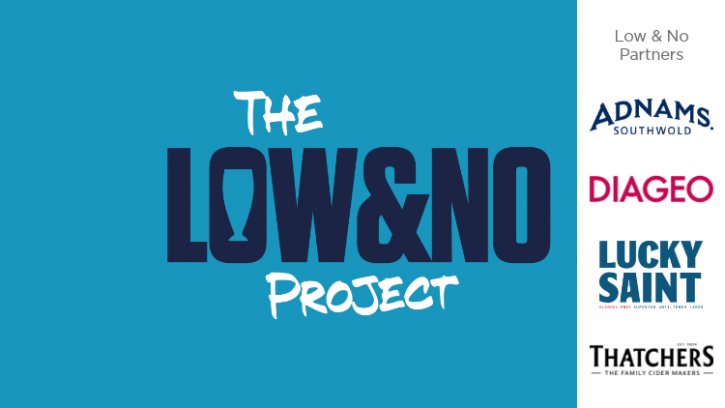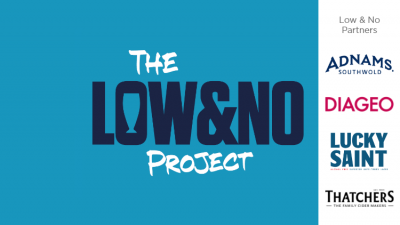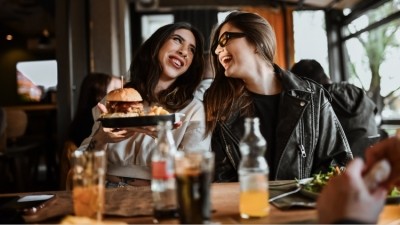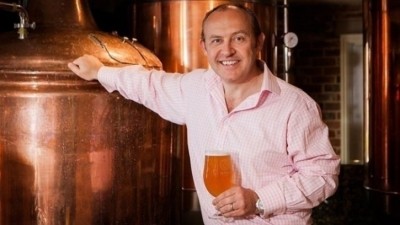THE LOW & NO PROJECT
Operators must be agile on low & no drinks

As sponsors of The Low & No Project, Adnams, Diageo, Lucky Saint and Thatchers have given their thoughts and some tips on how and why a pub should consider improving its offer to cater for an ever-increasing number of customers in the category.
Suffolk-based brewer Adnams, which makes Ghost Ship 0.5% ABV, said it is important for pubs to have low & no options across all categories, and that includes cocktails.
“Customers don’t want to feel that opting for a low-alcohol drink is a compromise,” said Adnams head of production Fergus Fitzgerald. “That’s not only reflected in expectations around quality of product and serve but also in the sheer breadth of options across all the main categories.
“I think the research shows that pubs have similar room to grow. We can do so much more in making the low & no options more visible, to give them equal prominence to their full-strength counterparts. For example, putting low-alcohol beers on draught, gives them more prominence, boosting their sales.”
Adnams head of brand & creative Jess Turner added: “More people are now researching the options available before they even visit so whether it is online through your website and social channels, or on the bar itself, it pays to make sure they know what you offer.
“Higher visibility also increases sales. Developing that presence alongside all the other products on your drinks menus and in targeted promotions around key times like lunch, enhances the customer experience and that, in turn, drives sales.”
Level of quality
Meanwhile, Kate Blake – senior category strategy manager alcohol-free at Diageo, which has Guinness 0.0 as one of its brands, explained: “The key to a successful drinks range is variety and the same goes for alcohol free.
“Having a mix of alcohol-free beers and spirits will enable operators to create great experiences for more people and will be able to provide twists on already popular serves – such as Captain Morgan 0.0% and cola or Gordon’s 0.0% and tonic.”
Blake added the serve is key and be in the correct glassware with ice and a garnish. “Customers typically expect this level of quality when spending time in pubs and bars whether they choose to consume alcohol or not,” she added.
Showcasing your range is a must, whether it’s through backbar placement, alcohol-free serves on chalkboards and table toppers or by using the colour blue to highlight a dedicated alcohol-free section on menu.
Blake said: “We know 74% of people are looking for something that feels more special than water or soft drinks and that people are willing to pay more for an alcohol-free beer or spirit than a soft drink.
“This presents operators with an opportunity to upsell from tap water while offering them an enhanced experience.”
She also encouraged buy-in from pub teams as being key to maximising the category. Offering customers recommendations can go a long way, she explained, and added ensuring staff are knowledgeable about an alcohol-free range and positively communicating some suggested serves to sell will be key.
Socialising is greatest reward of drinking
Lucky Saint, which has its 0.5% ABV Unfiltered Lager draught lines installed widely across the UK, said one of the biggest barriers to selling low & no is its visibility in pubs and bars.
Category & insights director Lou Pollitt said Lucky Saint has seen an increase in space on shelves in the off-trade in the past year the positive impact that has had on sales because one of the biggest challenges it has seen in its data is people have previously been unable to find its products.
Pollitt added research that will be released in a couple of weeks shows beer is still the biggest segment of low & no, and alcohol-free bottles were only visible in 30% of on-trade venues while draught made up a “pretty high” figure of 11%.
“Normalising the consumption of low & no is key,” she said. “It’s an easier upsell than encouraging people to drink more alcohol so there’s an opportunity for operators to lean into that a bit more. And if somebody asks for a soft drink, [a licensee] could have that conversation with them at the bar, which just doesn’t really seem to be happening at the moment.
“We always talk about the greatest reward of drinking is the socialising and not the alcohol. Equalising the offer with full-strength alcohol is something that [Club Soda founder and low & no drinks expert] Laura Willoughby talks about in terms of making the category as inclusive as possible.”
Lucky Saint head of PR & communications Kevin Lyster added: “That moment when you put alcohol-free beer in a pint glass with draught is the moment when all beers become equal. So if someone is drinking alcohol-free and is with friends who are drinking full alcohol products, they are a part of that round and that makes a big difference.”
Pollitt explains why the low & no sector is so vital for the on-trade: “The number of people moderating or drinking less frequently continues to go up. Pubs have to face the reality of that and what it means so having low & no options helps them to extend the dwell time but appeals earlier in the day and earlier in the week than full strength alcoholic drinks.”
The 0.5% ABV brewer, which also operates a pub in London, sees a higher proportion of Lucky Saint serves before 5PM than it does for the rest of its draught beer offer and it can “stretch that spend” earlier in the week through tapping into things like running clubs and other events.
Pollitt said: “A few years ago, maybe the perceptions around the category weren’t there, but now we’ve got these great-tasting products with really compelling brands.”
Lyster said a term Lucky Saint has adopted internally is the ‘power of the non drinker’. He explained: “If I’m not drinking but four of my friends are drinking full strength, but I know of a pub that has great alcohol-free options – which, primarily for me would be if it’s on draught – I'd encourage my friends to choose that venue. What that does is draws all five people into that pub and able to spend on food and drinks there.”
Gen Z leading the charge
North Somerset cider-maker Thatchers, which offers its Thatchers Zero cider to the on-trade said: “Alcohol-free cider is now a must-stock. It’s estimated that some 6.2m adults will be moderating this summer and it’s reportedly Gen Z who are leading the charge (source: KAM Media May 2023).
“They’re not alone though; more than a third of visits to the on-trade are now alcohol-free with people citing the alcohol-free range available as affecting their choice of venue.”
The cider-maker added apple cider is a huge volume driver for the category so pubs not stocking a premium low/no apple cider are missing out on a big opportunity.
It added staff members are the biggest asset to any pub when it comes to sales and, according to KAM Media stats, two out of five customers say they are likely to order a low or no drink instead of a soft drink or water if a member of staff highlighted availability.
“When someone orders a cider then moves to a soft drink option, it’s a great chance to talk them through the alcohol-free options you have available and upsell,” Thatchers said.
Thatchers agreed it is important to give visibility at the bar and on tables. “Awareness is often the barrier to a customer choosing a margin and experience-enhancing no and low product.”
On the future, the cider prodcuer said: “The consumer trend towards moderation is here to stay. Visiting bars and pubs remains the top choice for a ‘treat consumers most look forward to’ (source: CGA, December 2023).
“If the on-trade is to maintain this position, a well-rounded no/low solution is essential to maintain footfall and attract consumers to spend their all-important disposable income.”
- We have an ongoing survey that is gauging opinions and finding out what’s going on at pubs and bars when it comes to the low & no drinks market so make sure you click on the link to voice your opinion.







